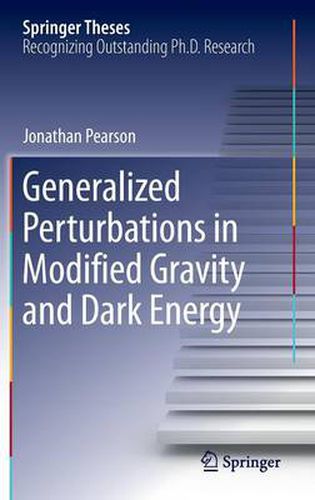Readings Newsletter
Become a Readings Member to make your shopping experience even easier.
Sign in or sign up for free!
You’re not far away from qualifying for FREE standard shipping within Australia
You’ve qualified for FREE standard shipping within Australia
The cart is loading…






This title is printed to order. This book may have been self-published. If so, we cannot guarantee the quality of the content. In the main most books will have gone through the editing process however some may not. We therefore suggest that you be aware of this before ordering this book. If in doubt check either the author or publisher’s details as we are unable to accept any returns unless they are faulty. Please contact us if you have any questions.
When predictions of Einstein’s theory of General Relativity are compared against observations of our Universe, a huge inconsistency is found. The most popular fix for this inconsistency is to invent around 94% of the content of the universe: dark matter and dark energy. The dark energy is some exotic substance responsible for the apparent observed acceleration of the Universe. Another fix is to modify the theory of gravity: it is entirely plausible that Einstein’s theory of General Relativity breaks down on cosmological scales, just as Newton’s theory of gravity breaks down in the extreme gravitational field of the Sun. There are many alternative theories of gravity, each with the aim of describing observations of our Universe where General Relativity fails. Whether it is dark energy or some modified theory of gravity, it is clear that there is some dark sector in the Universe. In this thesis the author constructs a unifying framework for understanding the observational impact of general classes of dark sector theories, by formulating equations of state for the dark sector perturbations.
$9.00 standard shipping within Australia
FREE standard shipping within Australia for orders over $100.00
Express & International shipping calculated at checkout
Stock availability can be subject to change without notice. We recommend calling the shop or contacting our online team to check availability of low stock items. Please see our Shopping Online page for more details.
This title is printed to order. This book may have been self-published. If so, we cannot guarantee the quality of the content. In the main most books will have gone through the editing process however some may not. We therefore suggest that you be aware of this before ordering this book. If in doubt check either the author or publisher’s details as we are unable to accept any returns unless they are faulty. Please contact us if you have any questions.
When predictions of Einstein’s theory of General Relativity are compared against observations of our Universe, a huge inconsistency is found. The most popular fix for this inconsistency is to invent around 94% of the content of the universe: dark matter and dark energy. The dark energy is some exotic substance responsible for the apparent observed acceleration of the Universe. Another fix is to modify the theory of gravity: it is entirely plausible that Einstein’s theory of General Relativity breaks down on cosmological scales, just as Newton’s theory of gravity breaks down in the extreme gravitational field of the Sun. There are many alternative theories of gravity, each with the aim of describing observations of our Universe where General Relativity fails. Whether it is dark energy or some modified theory of gravity, it is clear that there is some dark sector in the Universe. In this thesis the author constructs a unifying framework for understanding the observational impact of general classes of dark sector theories, by formulating equations of state for the dark sector perturbations.